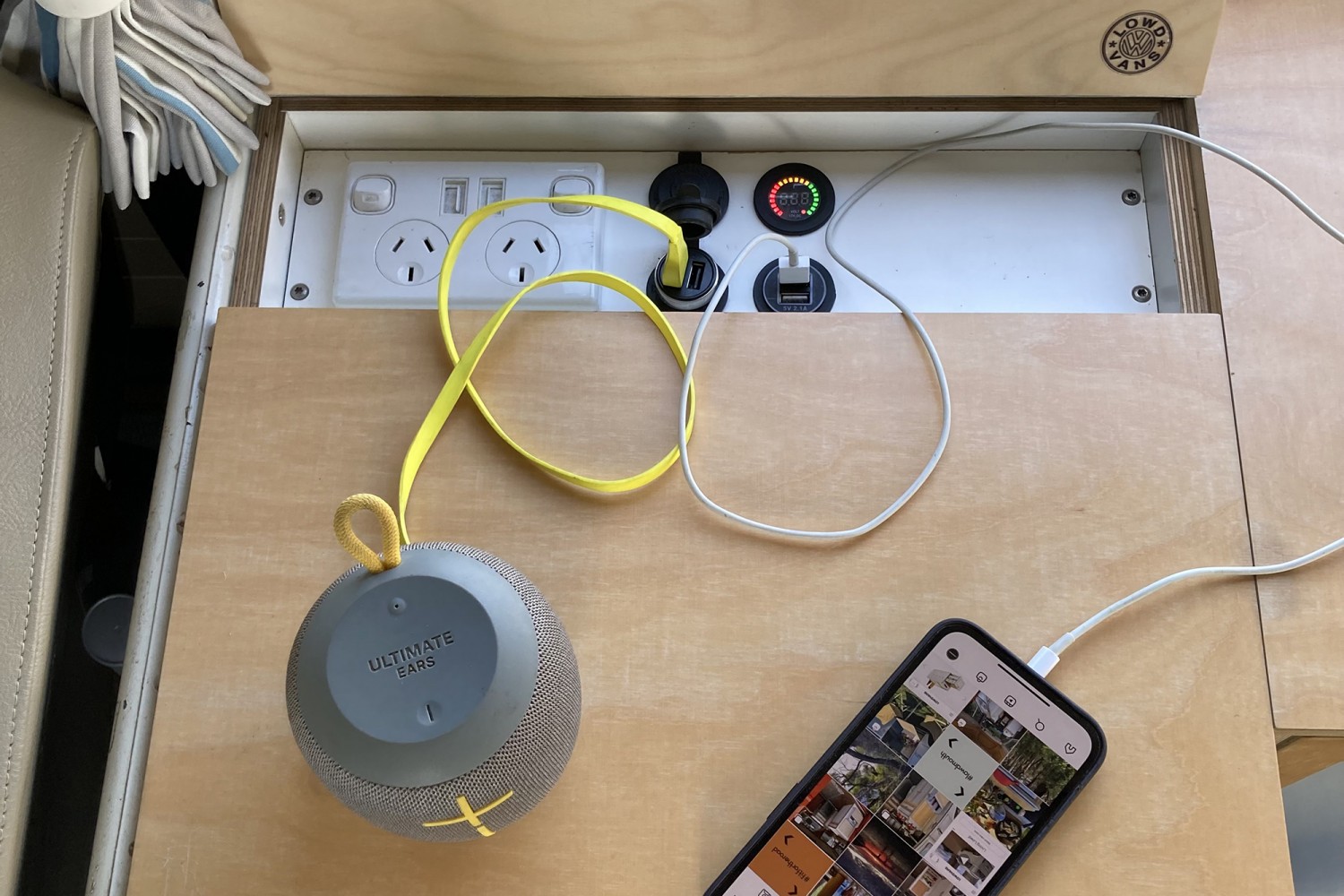Fully Wired
Lowd Vans guide to how to set up some basic kombi electrics
August 2023
August 2023

Disclaimer: we are not electricians. These suggestions are based on our own experience. Do your background research and consult an auto electrician for advice wherever possible. All 240V wiring is required by law to be installed by a licensed electrician.
Out on the road, having a second battery for back up is an absolute game changer. Obviously your vehicle’s automotive battery fires up the starter motor and is then recharged via the alternator, as you drive around. To avert power drainage when using electrical equipment (fridge, lights, phone chargers etc) while the vehicle is parked overnight and the motor is turned off, a second or ‘house’ battery is required to provide an alternative energy source. House batteries range from conventional lead acid deep cycle to state of the art lithium.
Investing in a lithium battery has many advantages. We made the changeover a couple of years ago and have no regrets. We now confidently head out bush and park up off grid, fully assured we will not drain our battery or lose power to our fridge and devices. A particular bonus is that unlike traditional lead acid batteries, lithium batteries can discharge practically fully and not be damaged by it. They have a faster charging time and also weigh comparatively a lot less - up to a third lighter than their lead counterparts (a valuable consideration when we’re talking old kombis) - whilst storing more energy. The lifespan of a lithium battery is considerably greater as well, making them more cost effective in the long run. That said, they are not cheap and cost will likely be a major determinant in making your choice. There are lots on the market and you will need to assess what your particular requirements are in terms of capacity and how much monitoring technology you’re after.
We placed our deep cycle battery under the rear passenger seat and ran all the 12V wiring from there to both the fridge and the “power centre” (see below). All Lowd Vans fridge cabinets are designed to take a Dometic (previously Waeco) CRX50 fridge-freezer. Dometic recommends minimising the distance from the battery to the fridge to prevent current drop off which is why we placed the battery under the seat rather than in the engine bay. They also recommend installing a dedicated 12V supply from the battery straight to the fridge - this presumably avoids problems when the fridge switches between 12V and 240V. As our fridge cabinet and fridge have provision for both 12V & 240V, each of these should be run separately.
Nowadays solar power is mainstream and has completely changed the landscape of camping and caravanning. With solar panels more affordable and less bulky than ever, we can rely on having electricity whenever and wherever we stop for the night. When we first bought our kombi we lugged about a big heavy stand alone solar panel which we plugged in and constantly reorientated throughout the day as the sun moved. We soon saw the advantages of switching to a roof mounted system. Roof mounted solar is streamlined, lightweight and convenient. There are a myriad of low profile flexible solar panels available that are inexpensive and simple to set up. Source them through RV, caravanning and camping suppliers or there are plenty available on eBay.
We chose a 12V 200W flexible solar panel which cost around 100 bucks on eBay and we mounted it to the rear end of our kombi’s fibreglass pop top, using pop rivets and sealant. We ran the cabling through the fibreglass roof - sealing around the entry holes with polyurethane (silicon sealant is to be avoided for autmotive applications) - and then cable tied the wiring to follow the cross struts of the pop top and from there run inside the headlining and wall cavity down to join the house battery via the solar controller.
We then ran another 12V wire from the battery to a fuse block which we placed under the screw off fascia panel in the power centre, this then supplied separate power lines to the 12V accessories: 12V sockets, USB outlets, battery monitor etc (all sourced through eBay). We screwed an earth point to the body work behind the drivers seat bulkhead.
Each of the Lowd Vans fridge cabinets has a dedicated power centre, accessed via a lift up flap at the rear of the cabinet. The power centre is pre-cut to take electrical accessories of your choosing. There is provision for a 240V double power point and up to 4x 12V outlets eg usb chargers (readily available on eBay) with space to add more if desired. Mains supply 240V wiring needs to be run separately from the power point (this must be 'double pole' & installed by a qualified electrician) to a circuit breaker and then to a 15A power inlet on the exterior of your van. The Dometic fridge also has provision for a 240V supply. All 240v wiring is required by law to be installed by a licensed electrician.
If you want to charge a laptop or tools or run household appliances you will need to invest in an inverter - this is required to convert 12V DC to 240V AC. We simply plug appliances directly into the 240V GPO (3 pin plug socket) in our inverter. A pure sine wave inverter is recommended for charging any sensitive electronic equipment.
Once you’ve got your basics set up you can relax in the knowledge that your roof top solar panel will be continually charging and feeding into your house battery. For added reassurance, you can even keep an eye on your levels through a simple battery monitor display mounted in the power board above the fridge.
Explore our range of fridge cabinets